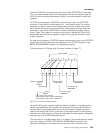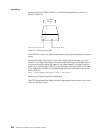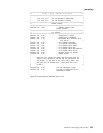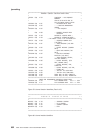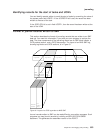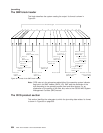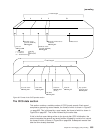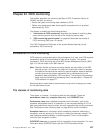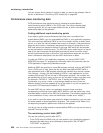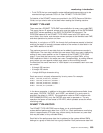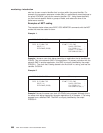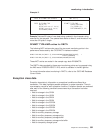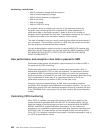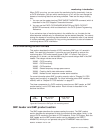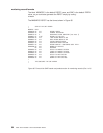
Chapter 24. CICS monitoring
This chapter describes the monitoring facilities of CICS Transaction Server for
OS/390, and tells you how to:
v Control the types of monitoring data collected by CICS
v Gather more performance data about specific transactions than is provided
automatically by CICS.
The chapter is divided into the following sections:
1. “Introduction to CICS monitoring” describes the classes of monitoring data,
event-monitoring points, and the use of the monitoring control table.
2. “CICS monitoring record formats” on page 663 describes the formats of
CICS monitoring SMF type 110 records.
The
CICS Performance Guide
lists all the system-defined data that can be
produced by CICS monitoring.
Introduction to CICS monitoring
CICS monitoring collects data about the performance of all user- and CICS-supplied
transactions during online processing for later offline analysis. The records
produced by CICS monitoring are of the MVS System Management Facility (SMF)
type 110, and are written to an SMF data set.
Note: Statistics records and some journaling records are also written to the SMF
data set as type 110 records. You might find it particularly useful to process
the statistics records and the monitoring records together, because statistics
provide resource and system information that is complementary to the
transaction data produced by CICS monitoring. The contents of the statistics
fields, and the procedure for processing them, are described in “Chapter 25.
CICS statistics” on page 677.
Monitoring data is useful both for performance tuning and for charging your users
for the resources they use.
The classes of monitoring data
Three types, or “classes”, of monitoring data can be collected. These are
performance class data, exception class data, and SYSEVENT data.
Performance class data is detailed transaction-level information, such as the
processor and elapsed time for a transaction, or the time spent waiting for I/O. At
least one performance record is written for each transaction that is being monitored.
See “Performance class monitoring data” on page 658 for further information.
Exception class data is information about exceptional conditions suffered by a
transaction, such as queuing for file strings, or waiting for temporary storage. This
data highlights possible problems in system operation. There is one exception
record for each exception condition.
SYSEVENT class data is a special kind of transaction timing information. For more
information about SYSEVENT data, see the
CICS Performance Guide
.
© Copyright IBM Corp. 1977, 1999 657



